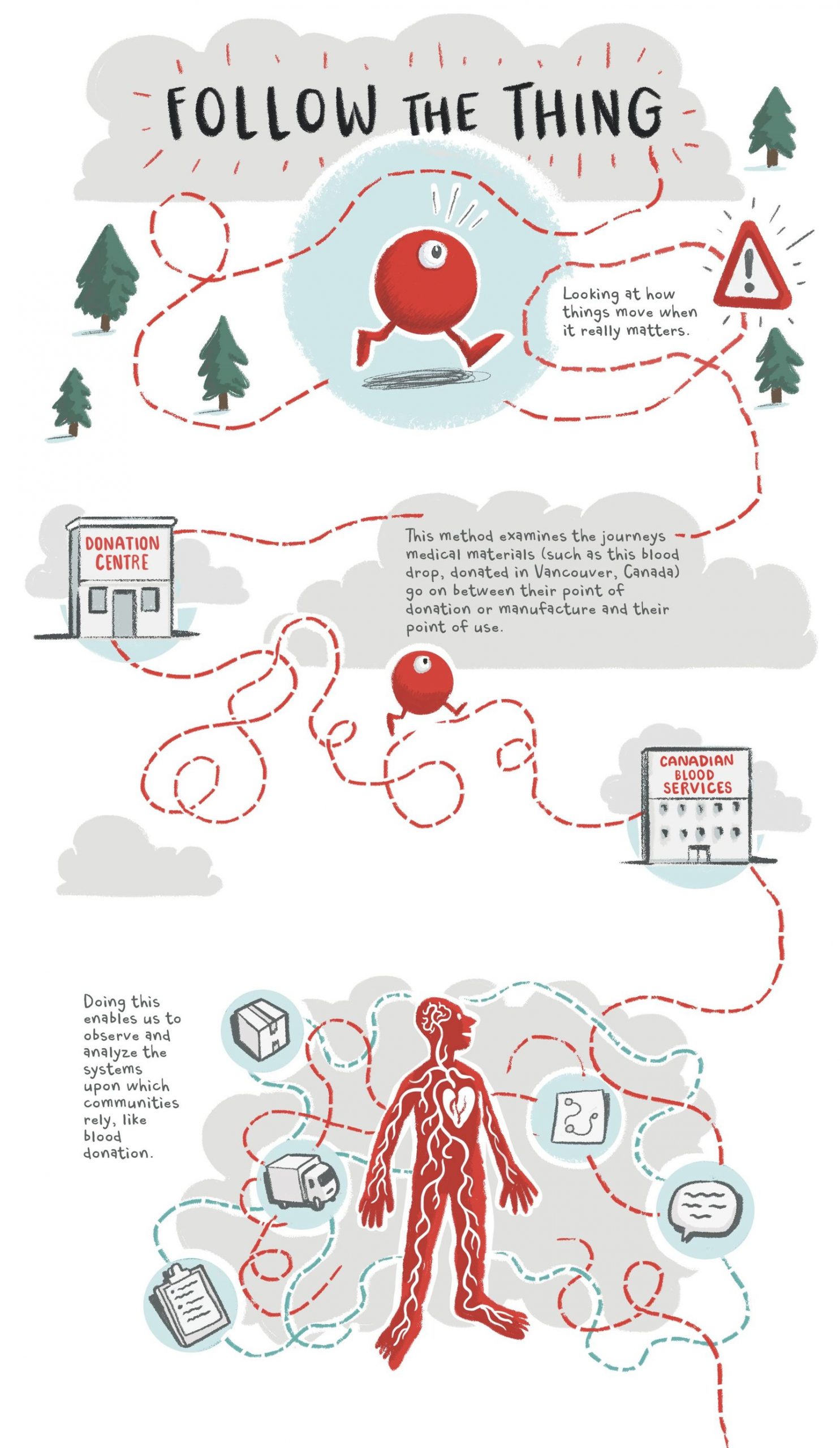Blood Journey
The full scroll illustration can be seen here.
How does blood move from the point of donation to the point of care? This is the focus of scroll illustration that we co-created. The story follows the complex, extensive, and fraught journey of a drop of donated blood. This illustration depicts my research on the mobilities of unapparent and taken-for-granted medical supply chains, and the impacts of climate change on such vital mobilities.
This ‘follow the thing’ research goes beyond a human-centred perspective to trace the complex journey of donated blood directly. In this case, I conducted interviews, went on facility tours, and analysed documents to understand the mobilities of blood. The method surfaces overlooked connections, complexities, and vulnerabilities between people, infrastructures, and environments.
I wanted to tell a specific, compelling story about a bag of blood. Based on my fieldwork, I developed nine fictionalised vignettes that emphasised the role of mobility in blood donation. In the narrative, four vials of blood are flown to a different part of Canada for testing to ensure the blood is safe. Each component — plasma, platelets, and red blood cells — goes to a different location, travelling surprising distances. There are countless routes blood can take, but I wanted to tell a specific story. The narrative arc involves a car crash with the vignettes showing donated red blood cells being transported by an air ambulance and a patient waking in hospital to see donated blood being transfused.
Fictionalisation of follow the thing permits researchers, stakeholders, and the public to understand processes that are unapparent, as well as to explore and emphasise novel themes, such as climate impacts and adaptation. This unique perspective draws connections with broader societal issues, in this case, medical supply chains and climate change.
Here is a link to the Follow the Thing method guide I developed with the Methods for Change research team.
Here is a link to a blog post about the illustration.
